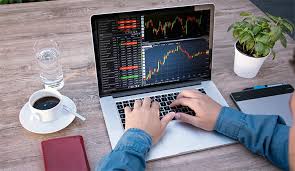30 Oct Understanding Forex Trading Definition, Basics, and Strategies 1679259079

Understanding Forex Trading: Definition, Basics, and Strategies
Forex trading, short for foreign exchange trading, involves the buying and selling of currencies in a global marketplace designed for currency exchange. The forex market is the largest and most liquid financial market in the world, with a daily trading volume exceeding $6 trillion. This article will explore the definition of forex trading, its key components, and various strategies that traders employ to succeed. For those interested in starting their trading journey, you may want to check out the forex trading definition Best Platforms for Trading available today.
What is Forex Trading?
Forex trading is the act of purchasing one currency while simultaneously selling another. This is done in currency pairs, where traders speculate on the value of one currency against another. For instance, if a trader believes that the euro will strengthen against the US dollar, they might buy the EUR/USD pair. When the euro rises in value relative to the dollar, the trader can sell the pair for a profit.
The Mechanics of Forex Trading
The mechanics of forex trading involve several key concepts:
- Currency Pairs: Currencies are quoted in pairs, such as EUR/USD. The first currency is the base currency, and the second is the quote currency.
- Bid and Ask Price: The bid price is the amount a trader is willing to pay for a currency, while the ask price is the amount at which they are willing to sell. The difference between these prices is known as the spread.
- Leverage: Forex trading often involves leverage, which allows traders to control larger positions with a smaller amount of capital. While this can amplify profits, it also increases risk.
- Pips: A pip is a unit of measurement used to express the change in value between two currencies, usually the fourth decimal place in the exchange rate.
Types of Forex Markets
There are three main types of forex markets: the spot market, the forward market, and the futures market.
- Spot Market: This is the most common type of forex market, where transactions are executed immediately at the current market price.
- Forward Market: The forward market allows traders to buy or sell currencies for delivery on a future date. Here, the price is agreed upon in advance.
- Futures Market: Similar to the forward market, futures contracts are agreements to buy or sell a currency at a predetermined price and date. Unlike forwards, these contracts are standardized and traded on exchanges.
Participants in the Forex Market
The forex market is made up of various participants, including:

- Central Banks: Governments and central banks engage in forex trading to manage their currency’s value and maintain economic stability.
- Institutions: Large financial institutions, such as banks and hedge funds, regularly trade currencies to diversify portfolios and hedge risks.
- Retail Traders: Individual traders participate in the forex market, usually through online trading platforms. They often trade based on technical analysis and market trends.
- Corporations: Companies engage in forex trading to manage international operations, converting foreign earnings back to their domestic currency.
Forex Trading Strategies
Various strategies can be employed in forex trading, including:
- Scalping: A short-term strategy that involves making small profits from minor price movements, executing numerous trades throughout the day.
- Day Trading: Traders buy and sell currencies within the same trading day, closing all positions before the market closes.
- Swing Trading: This strategy involves holding positions for several days or weeks to profit from price swings.
- Position Trading: A long-term strategy where traders hold positions for weeks or months, focusing on fundamental analysis to guide currency selection.
Risks and Benefits
Like any type of trading, forex trading involves risks. Some of the primary risks include:
- Market Volatility: Currency markets can be highly volatile, leading to significant losses if positions are not managed properly.
- Leverage Risks: While leverage can enhance profits, it also magnifies losses. Traders must use it wisely to avoid substantial financial setbacks.
However, there are also numerous benefits:
- Liquidity: The forex market is extremely liquid, allowing traders to enter and exit positions quickly.
- Accessibility: With the rise of online trading platforms, forex trading has become accessible to individual investors worldwide.
- 24-Hour Market: The forex market operates 24 hours a day, allowing traders to engage at their convenience regardless of their time zone.
Getting Started with Forex Trading
To begin trading forex, follow these steps:
- Choose a Reliable Broker: Partner with a reputable forex broker that offers a trading platform suitable for your needs.
- Develop a Trading Plan: A well-defined trading plan that outlines your goals, strategies, and risk management approaches is essential for success.
- Start with a Demo Account: Many brokers offer demo accounts where traders can practice without risking real money.
- Fund Your Account: Once you feel confident, fund your account and begin trading with real capital.
Conclusion
Forex trading is an exciting and dynamic way to engage in the global financial markets. Understanding the definition of forex trading, its mechanics, participants, and strategies can help traders navigate this complex landscape. While risks are inherent in forex trading, the potential rewards can be significant for those who take the time to learn and develop their skills. Whether you are a novice trader or an experienced professional, staying informed and continually honing your strategy is key to success in the forex market.

No Comments